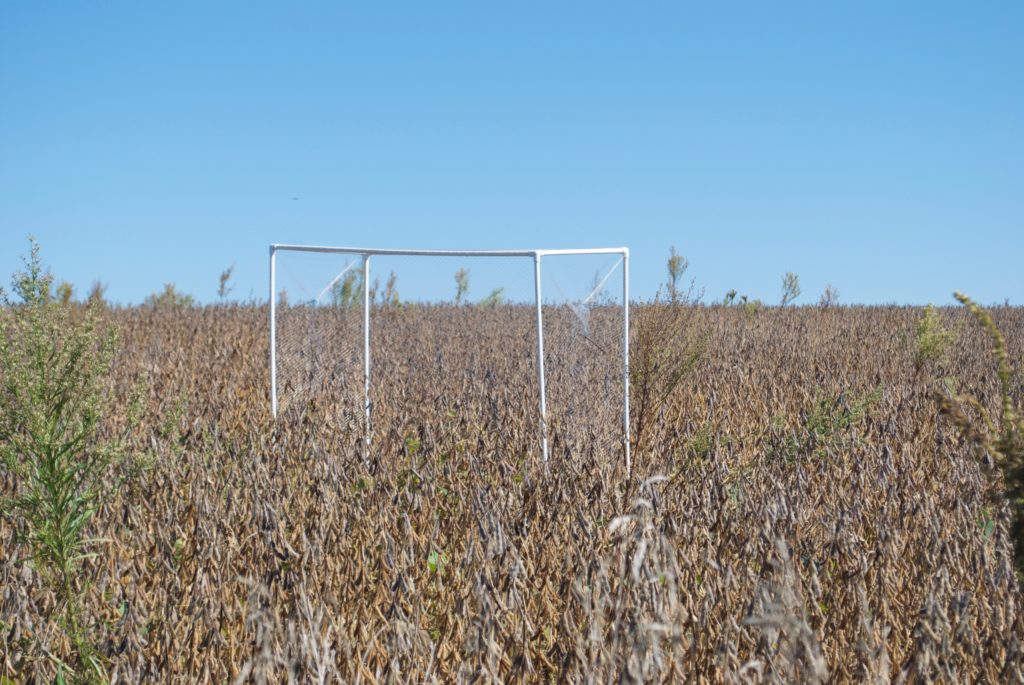By Megan Garfinkel
Linked paper: Birds suppress pests in corn but release them in soybean crops within a mixed prairie/agriculture system by M.B. Garfinkel, E.S. Minor, and C.J. Whelan, The Condor: Ornithological Applications.
The Midwest’s vast seas of corn and soybeans are not known for their bird abundance or diversity, but if you look in the right places, the birds are there. A good place to find them is where cropland abuts the small patches of remnant and restored prairie scattered across the landscape. Here, you might find Dickcissels, Meadowlarks, Common Yellowthroats, and many other species popping out from the crops.
Plenty of studies, especially in “birdy” places like shade-grown coffee farms, have shown that birds can provide an economically valuable service to farmers by eating pest insects. But what about in the huge swathes of farmland that cover much of the U.S.? We wanted to find out whether birds were having an effect on these farms, too, and we designed an experiment that focused on an area where corn and soybeans grow adjacent to prairie fragments. We wanted to know if birds had a positive, negative, or neutral effect on crop yield in these fields and what exactly these birds were eating. To that end, we set up cages (“exclosures”) over corn plants and soybean plants, made of a mesh that keeps birds out but allows arthropods such as insects in. We knew that the birds in our study site don’t directly damage or eat the crops, but they do eat a variety of insects and other arthropods, and some of those arthropods can directly damage or eat crops. By comparing the crop yield between caged and uncaged plants, we could determine the indirect effect of birds eating insects. We also took fecal samples from birds at our study site to determine what they had been eating through a non-invasive DNA barcoding diet analysis.

Our results were surprising. We found that birds had a positive effect on corn crop yield, but a negative effect on soybean crop yield in the adjacent field. The fields were so close that they likely hosted the same individual birds. To figure out what was going on, we looked closely at what the birds had been eating. We found that 35% of the birds we tested had consumed Northern corn rootworms, a beetle that can cause major damage to corn crops. About 13% of birds had eaten a type of stink bug that can be a soybean pest but often doesn’t cause major damage in low densities. And about 22% of birds had eaten a “natural enemy” of pests, like spiders or predatory beetles. We think that because birds were eating a lot of corn pests that can cause crop damage, we saw a net positive effect in the corn crops. Meanwhile, the fact that birds were also consuming predatory arthropods that would have eaten additional harmful insects may have outweighed the consumption of a few soybean pests, leading to an overall negative effect of birds in soybeans.
So, what does this mean for farmers? We figured putting a dollar value on these potential bird effects would be the most effective way to emphasize the significance of our results. We used our experiment’s results to estimate that birds provided a service worth approximately $275 per hectare in the corn crop and a disservice valued at approximately $348 per hectare in the soybean crop. These numbers are extrapolated from a relatively small-scale experiment, and likely vary between sites and years, but they show us that birds have the potential to provide surprisingly large economic effects under the right conditions. For the many farmers that use a corn-corn-soybean rotation schedule, this may suggest economic gain in the long run. If we can show with future studies that keeping prairie habitat near farms is economically beneficial, then perhaps we can incentivize conservation of prairies within a largely agricultural landscape.
